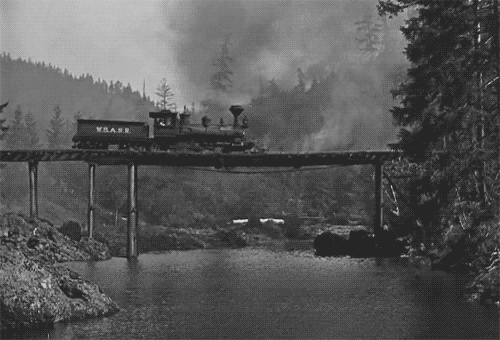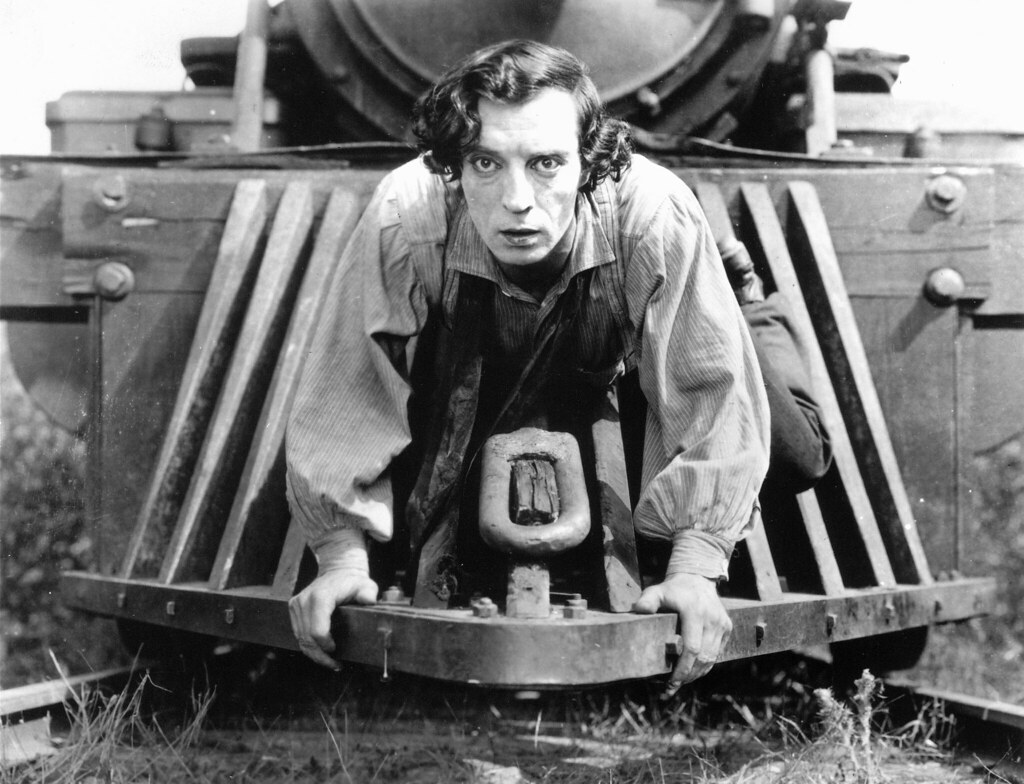For the first film in my personal Sight & Sound “Greatest of All Time” challenge, I watched Buster Keaton’s “The General.” It’s not my first time visiting the silent film era — my wife and I are both big fans of Charlie Chaplin — but it’s my first time seeing a Keaton flick. And wouldn’t you know it, he lives up to the hype.
“The General” is a work superb artistry. Keaton’s eye for visual storytelling is phenomenal, from the first shot, which elegantly introduces us to the eponymous steam engine, to the final one, an amusing twist on the “guy gets the girl” trope. And, of course there are the stunts and practical effects. Like an auteur Tom Cruise, Keaton jumps between train cars, climbs along the sides of moving locomotives, rides a cowcatcher, and more. And of course, there’s the climactic train falls into a river scene (for which Keaton reportedly purchased a real train and had his crew build a real bridge to destroy):

It’s the grandfather of all modern action-comedies — just an incredible amount of fun, even for modern viewers. Well, modern viewers might have one small issue with “The General,” but I’ll get to that.
The plot in a nutshell: It’s 1861, and the Civil War has broken out. A steam train engineer, desperate to impress his paramour and her family, is eager to enlist. But, he is rejected for combat service due to the critical importance of his day job. A year later, the war rages, and he’s back at work. Enemy soldiers hijack his train during a dinner stop, and he follows in hot (and often hilarious) pursuit. Eventually he twarts a plot to sabotage his own side’s supply chain, saves his girlfriend, and earns the rank of lieutenant in the army that once turned him away.
Sounds nice! Alas, here’s the thing: The hero and all the good guys are fucking Confederates.
This masterwork of silent film-making, and it is a masterwork, is also a scrappy underdog story about the fucking Confederacy. To be clear, the film is about as apolitical as one set in the Civil War could be. There are no fiery speeches or appeals to ideology, just superficial good guys and bad guys. But, again, the good guys are fighting against President Abraham Lincoln.
Apparently the movie was based on a real event, which Keaton and his collaborators were familiar with thanks to a Union participant’s memoir. Keaton changed the story to a Confederate perspective because he thought audiences would find it more sympathetic. Okay?! What the fuck!
I think the movie is well worth watching, but if that sours you on it I wouldn’t blame you. Anyway, Keaton is long dead and the movie is in the public domain. Check it out on YouTube.
